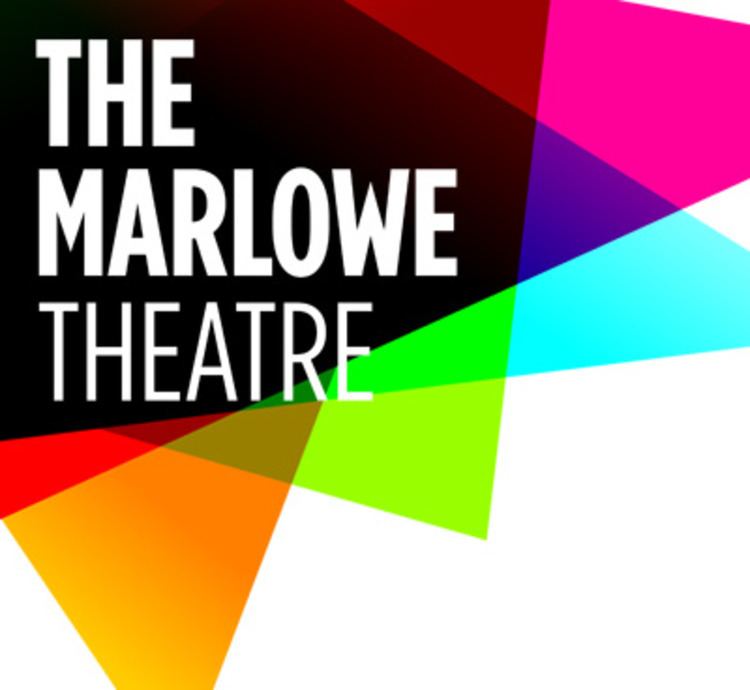Capacity 1,200 on three levels Rebuilt 2009–2011 Opened 1984 | Reopened 4 October 2011 Years active 1984 – present Phone +44 1227 787787 | |
 | ||
Similar Hazlitt Theatre, Beaney House of Art and K, Churchill Theatre, Leas Cliff Hall, St Augustine's Abbey Profiles | ||
Snow white pantomime at the marlowe theatre
The Marlowe Theatre is a major 1,200-seat theatre in Canterbury, England.
Contents
- Snow white pantomime at the marlowe theatre
- Name
- First building
- Second building
- Redevelopment and the Third Building
- Programme
- Pantomime
- The Marlowe Youth Theatre
- References
It was briefly closed in March 2009 for redevelopment, reopening in a brand new building on 4 October 2011.
Name
The theatre was named after the playwright Christopher Marlowe, who was born and attended school in the city. In front of the present theatre is a 19th-century statue, The Muse of Poetry (Marlowe is known as the Muses' darling) surrounded by small effigies of characters from Marlowe's plays.
First building
The Marlowe Theatre previously occupied another site on St Margaret's Street, Canterbury which was demolished in 1982.
Second building
The second building in The Friars was built in 1933 as the Friars Cinema, where on 11 May 1944 the film A Canterbury Tale received its world premiere. It reopened as the second Marlowe Theatre in July 1984.
25 years later the converted cinema building had reached the end of its useful life, and the Marlowe closed for redevelopment on 22 March 2009.
Redevelopment and the Third Building
Canterbury City Council was advised that an entirely new theatre would cost more than redeveloping The Marlowe on its existing site (there being no suitable alternative site available), and therefore decided in 2005 to give the go-ahead to a multimillion-pound redevelopment of the theatre, with the working title of the New Marlowe Theatre Project. In March 2007 Keith Williams was announced as the chosen architect for the project.
The estimated cost was £25.6 million at 2008 prices. The old theatre building was demolished, and the new building containing two new auditoria. The project provided additional parking spaces for people with disabilities and a new, landscaped riverside walk connects the Marlowe directly to the banks of the River Stour. Construction by main contractors ISG Jackson began in 2009 and the 3rd Marlowe Theatre building was formally opened to great celebration by HRH The Earl of Wessex on 4 October 2011.
Programme
The programme of shows includes plays, major West End musicals, ballet, contemporary dance, opera, stand-up comedy, orchestral concerts, music gigs and children's shows. Regular visiting companies include Glyndebourne Opera, National Theatre On Tour, Matthew Bourne, Propeller, Northern Ballet, Rambert Dance Company and Theatre Royal Bath.
The venue has also featured performances by music artistsJohn Surman. His LP Morning Glory was recorded there 12 March 1973. Elvis Costello, Van Morrison, Ray Davies, Suzanne Vega, Kate Rusby, Richard Thompson and José González.
In 2014 Artistic Director Mark Everett announced that the Marlowe Theatre would begin operating as a producing house with original productions thanks to a £23,000 grant from Arts Council England. Their focus will be on new writing.
Pantomime
The Marlowe Theatre's pantomime is produced with Evolution Pantomimes, who produce number of pantomimes across the country. Past stars in The Marlowe Theatre pantomimes have included Natalie Imbruglia, Martine McCutcheon, Danniella Westbrook, Shelia Ferguson, Shaun Williamson, Daniel MacPherson, Robert Powell, Lewis Collins, Emma Barton, Adrian Edmonson, John Thompson, John Partridge, Toyah Willcox, Samantha Womack, Rita Simons and Gareth Gates.
The Marlowe Youth Theatre
The Marlowe Theatre runs a programme of weekly theatre workshops for young people. The Marlowe Youth Theatre now has a permanent home in The Marlowe Lab, in Pound Lane, Canterbury. In 2013, a major collaboration took place with the National Theatre on the Connections project.
